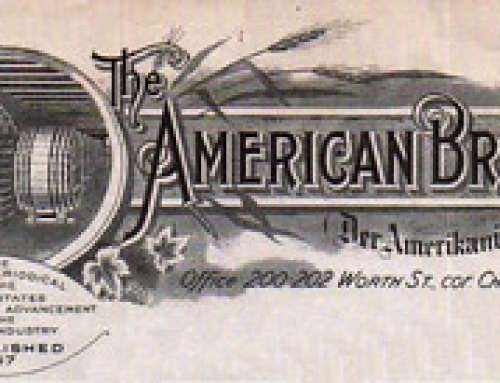 Over the course of the last year, Tombstone lagers have evolved just a little bit with each batch. We started with eliminating oxygen from the hot side of our brewing process to help retain some of the subtle malt flavors and produce paler, brighter beers. We began fermenting extra cold to achieve 100% natural carbonation. We changed yeast strains to help retain even more of the malt flavor while still fermenting beers to the same degree of attenuation. This batch of Helles Dorado that is coming down the line in Tombstone now is the culmination of all of that and our final process change: Bioacidification.
Over the course of the last year, Tombstone lagers have evolved just a little bit with each batch. We started with eliminating oxygen from the hot side of our brewing process to help retain some of the subtle malt flavors and produce paler, brighter beers. We began fermenting extra cold to achieve 100% natural carbonation. We changed yeast strains to help retain even more of the malt flavor while still fermenting beers to the same degree of attenuation. This batch of Helles Dorado that is coming down the line in Tombstone now is the culmination of all of that and our final process change: Bioacidification.
In the United States, the two most common ways of correcting the pH of wort are to add lactic acid or to use acidulated malt. Acidulated Malt use is also very common in Germany due to its compliance with the Beer Purity Law of 1906. While both methods do provide advantages to the brewing process, they might not necessarily be the best methods for the flavor quality. A more natural method of acidifying wort is to brew a batch of unhopped wort, inoculate it with lactic acid producing bacteria, let bacteria sour the wort, and then use the soured wort as the source of acid for correcting pH in the mash tun and the kettle. While this method obviously is more labor intensive than the simpler adjustments, we feel that the benefits far outweigh the inconvenience of having to add a day into the process for sour wort production.
Even the most basic of homebrewers knows that the ideal pH of a mash is between 5.2 and 5.7. Typically when mashing in a pale wort, without any correction, the mash will fall on the higher end of that range or even slightly above. The simple addition of lactic acid or acidulated malt will correct the wort pH into that range and will result in better enzyme activity, a less astringent beer, lauter times will be improved, and the wort will be a little bit lighter than if let in it’s pH level. We call those methods of acid adjustment “technical acidification.” In comparison, biological acidification, the more natural acidification method, will do all of those same things while also inhibiting detrimental enzymes, improve head retention, and most importantly there is a flavor imparted by the sour wort that can’t be found in technically acidified beers.
The low oxygen wort that we produce creates a great environment for souring and the result is a bright, slightly grapey flavored wort (known as sauergut) rather than the yogurt like acidity that is produced with lab produced lactic acid. This has allowed us to drop the pH value all the way to the low end of the mash pH range without a detriment to the flavor of the beer. As a result, the wort is even clearer than before, slightly paler, and better protected from staling compounds which further improves the head retention. After the mash and lauter, we can then use the sauergut for correcting the pH even further to a more ideal boil pH range which results in a better precipitation of proteins and additionally provides the beer with that bright, grapey flavor. This is a subtle flavor found in many of the best German lagers, but frequently absent in their American brewed counterparts. The flavor is subtle enough that only the most in tune beer drinkers will be able to identify the flavor for what it is, but for most drinkers it will be more like seeing their favorite classic movie in HD for the first time. The flavors are more well defined and seem to pop better. The beer comes across as more easy drinking but still retains all of the full flavor you expect from a craft beer.
While many brewers may not find these processes to be worth their time or energy, we do believe that the combination of all of these process changes has been massively beneficial to our lagers and we can’t wait to share more of them with you with several new brands scheduled to be brewed in the next couple of months.


Leave A Comment